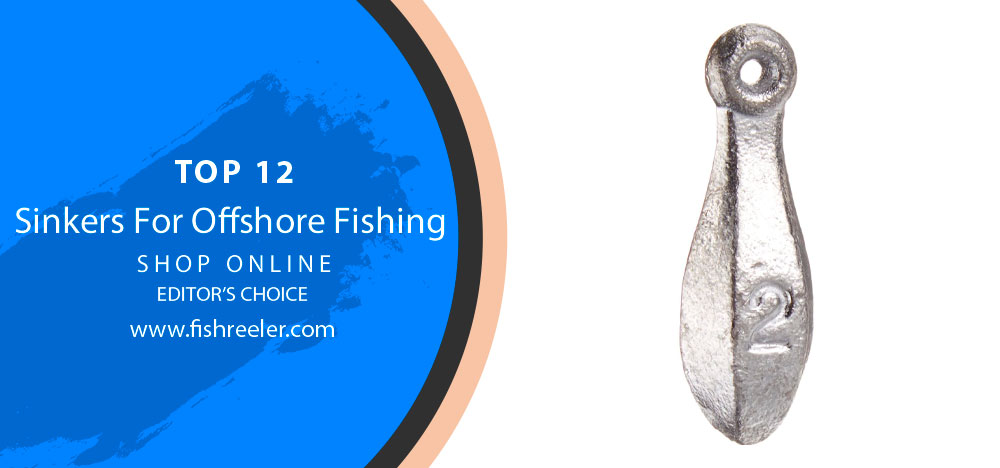
Dropping it Low: How Sinkers Can Improve Your Offshore Fishing Game
Offshore fishing is a thrilling adventure that offers anglers the opportunity to catch some of the biggest and most elusive fish in the sea. But, to be successful, you need the right gear, and that includes sinkers. Sinkers, also known as weights or leads, are small, dense objects that are attached to the fishing line to help it sink deeper into the water. They play a crucial role in offshore fishing, allowing anglers to reach deeper waters where big game fish are more likely to be found.
Sinkers not only increase casting distance but also improve bait presentation, increase sensitivity, reduce drag, and allow you to target specific depths. With the right sinker, you can take your offshore fishing game to the next level and increase your chances of landing a trophy fish. In this blog post, we’ll explore the benefits of using sinkers for offshore fishing and provide tips on how to choose the right sinker for your needs.
➰So, buckle up and get ready to learn how to drop it low with sinkers!
The Secret Weapon in Offshore Fishing: Sinkers Explained
Sinkers, also known as weights or leads, are small, dense objects that are attached to the fishing line to help it sink deeper into the water. They come in a variety of shapes and sizes, ranging from small split shot sinkers to large egg sinkers and everything in between.
When it comes to offshore fishing, sinkers play a crucial role in allowing anglers to reach deeper waters where big game fish are more likely to be found. With the right sinker, anglers can target specific depths and improve their bait presentation, making it more enticing for fish to bite. Sinkers also increase sensitivity, allowing anglers to feel the slightest nibble or bite on their line.
But, sinkers aren’t just for reaching deeper waters and improving bait presentation. They also reduce drag on the fishing line, making it easier to cast farther and more accurately. And, if you’re fishing in windy or choppy conditions, sinkers can help keep your bait in place and prevent it from drifting too far from the intended target.
➰Overall, using sinkers for offshore fishing is a game-changer that can increase your chances of landing a trophy fish.
Maximizing Your Offshore Fishing Success with Sinkers: Tips and Tricks
When it comes to offshore fishing, using sinkers can significantly increase your chances of success. Sinkers allow you to reach deeper waters, improve bait presentation, reduce drag, and keep your bait in place in windy or choppy conditions. But, there’s more to using sinkers than simply attaching them to your line. In this blog post, we’ll explore some tips and tricks for maximizing your offshore fishing success with sinkers.
Choose the Right Size and Shape: The size and shape of your sinker will depend on the depth you’re targeting and the conditions you’re fishing in. Larger sinkers are better for deeper waters, while smaller sinkers work well in shallower areas. Different shapes, such as bullet or pyramid sinkers, can also impact the way your bait moves in the water.
Use the Right Line: Using the right line is crucial when fishing with sinkers. A heavier line can handle heavier sinkers and bigger fish, while a lighter line allows for more sensitivity and better bait movement. Consider the conditions you’re fishing in and the size of the fish you’re targeting when selecting your line.
Adjust Your Technique: When using sinkers, it’s important to adjust your technique to ensure that your bait is presented in a natural and enticing way. Experiment with different retrieval speeds and movements to see what works best for the fish you’re targeting.
Weighted Decisions: The Benefits of Using Sinkers for Offshore Fishing
Offshore fishing can be an exciting and rewarding experience, but it requires the right gear to be successful. One essential piece of gear for offshore fishing is the sinker. Sinkers, also known as weights or leads, are small, dense objects that are attached to the fishing line to help it sink deeper into the water.
➰Here are some benefits of using sinkers for offshore fishing:
- Increased casting distance: By adding a sinker to your fishing line, you can increase your casting distance, allowing you to reach deeper waters where bigger fish are more likely to be found.
- Improved bait presentation: Sinkers can also help to improve the presentation of your bait or lure, as they allow you to adjust the depth at which your bait is presented. This can be especially important when targeting fish that are suspended at a specific depth.
- Increased sensitivity: Using a sinker can also help to increase the sensitivity of your fishing line, as it allows you to feel even the slightest bites or nibbles from the fish.
- Reduced drag: When fishing in strong currents or windy conditions, a sinker can help to reduce drag on your fishing line and make it easier to control your presentation.
- Target specific depths: By choosing the right size and weight of the sinker, you can target specific depths where fish are more likely to be found.
Sinker Selection 101: Choosing the Right Weight and Shape for Offshore Fishing
Choosing the right weight and shape of sinker for offshore fishing is crucial to ensuring that your bait is presented in the most effective way possible.
➰Here are some tips for selecting the right weight and shape for your next offshore fishing adventure.
- Consider the Depth: The deeper the water you’re fishing in, the heavier your sinker should be. This is because heavier sinkers will sink faster and keep your bait closer to the bottom where the fish are. As a general rule, a sinker should weigh approximately 1 ounce for every 10 feet of water depth.
- Think About Currents: In areas with strong currents, you may need to use a heavier sinker to keep your bait in place. Additionally, certain shapes of sinkers, such as pyramid sinkers, are designed to anchor your bait in place in strong currents.
- Experiment with Shapes: Different shapes of sinkers can impact the way your bait moves in the water. For example, bullet sinkers are streamlined and create less drag, while egg sinkers are more round and create more drag, which can be useful for slower presentations. Pyramid sinkers, as mentioned before, are designed to anchor your bait in place.
- Consider the Type of Fish: The size and type of fish you’re targeting can also impact your choice of the sinker. Bigger fish require heavier sinkers and stronger lines, while smaller fish can be caught with lighter gear.
Why Sinkers are a Must-Have for Serious Offshore Anglers?
Sinkers are a critical component for offshore fishing, and serious anglers know that having the right sinker can make all the difference in their fishing success.
➰Here are some reasons why sinkers are a must-have for serious offshore anglers.
Control Over Bait Depth: Sinkers are used to control the depth of your bait, which is essential for targeting specific species of fish. By choosing the right weight and shape of the sinker, you can keep your bait at the optimal depth for the fish you’re trying to catch.
Better Presentation: The right sinker can also improve the presentation of your bait. A sinker can provide weight and stability to your line, which can help your bait to move in a more natural way and appear more enticing to fish.
Increased Casting Distance: Sinkers can also increase your casting distance, allowing you to cast your line farther and reach deeper waters. This is particularly important for offshore fishing, where many species of fish are found in deeper waters.
Adaptability: With the wide variety of sinkers available, anglers can easily adapt their techniques to changing conditions. Different shapes and weights of sinkers can be used to adjust for currents, depth, and other factors.
In summary, sinkers are a must-have for serious offshore anglers. By providing control over bait depth, improving presentation, increasing casting distance, and offering adaptability to changing conditions, sinkers are a critical component of any angler’s tackle box.
Sink or Swim: Choosing the Right Sinker for Your Offshore Fishing Adventure
Are you ready to take your offshore fishing game to the next level? Then it’s time to upgrade your gear and invest in a rod that can handle sinkers like a pro. Using sinkers is a game-changer in offshore fishing, allowing you to reach deeper waters and target bigger fish.
But, not all rods are created equal when it comes to using sinkers. That’s why in this blog post, we’ll explore the best rods for sinkers for offshore fishing and help you find the perfect rod to take your fishing experience to the next level. Get ready to cast farther and catch bigger fish with the right rod and sinker combination.
Anyone who has ever gone offshore fishing knows that having the right sinkers is critical to success. If you are using the wrong type of sinker, you can easily lose your bait and your hooks in the deep water.
➰Whether you’re fishing offshore for big game fish like tuna or marlin, or targeting smaller species like flounder or redfish, using the right sinkers is essential to success.
In this blog post, we’ll take a look at some of the best sinkers for offshore fishing, and we’ll also recommend a few of our favorite models. So whether you’re just getting started in offshore fishing or you’re looking to upgrade your tackle box, read on for some tips and advice on the best sinkers for the job!
1# Offshore Angler Disc Sinkers
Offshore Angler’s Disc Sinkers are an excellent choice for heavy current fishing because they don’t roll around like round weights and are largely unaffected by moving water. This low-profile design allows the Disc Sinker to lie flat on the bottom, permitting water to pass over the weight without budging. The Offshore Angler Disc Sinker is made of a high-impact plastic that is incredibly durable and will stand up to the rigours of saltwater fishing. The sinker is available in a variety of sizes to accommodate different fishing conditions. If you’re looking for a sinker that will stay put in heavy current, then you need the Offshore Angler Disc Sinker.
2# Offshore Angler Surf Sinkers
If you’re looking for a surf sinker that can help you dig in on sandy bottoms, then you need an Offshore Angler Surf Sinker. These unique sinkers are designed with copper wire to provide superior holding power. whether you’re fishing in calm waters or rough surf, you can trust that your Offshore Angler Surf Sinker will keep you firmly anchored. So go ahead and cast out into the deep blue sea – with an Offshore Angler Surf Sinker, you’ll have the perfect weight to enjoy a successful day of fishing.
3# Offshore Angler Rock Cod Sinkers
Achieve the perfect presentation with Offshore Angler Rock Cod Sinkers. Weights up to 4 lbs are sure to get you to the bottom, while the glossy finish and super-sharp point help ensure a natural presentation that will fool even the most finicky fish. Made from premium materials, these sinkers are built to last and stand up to whatever you throw at them. So whether you’re targeting rock cod, halibut, or any other bottom-dwelling fish, make sure you have a few Offshore Angler Rock Cod Sinkers in your tackle box.
4# Offshore Angler Trolling Sinker
If you’re looking to get more depth from your deep lines, especially wire lines, our Offshore Angler Trolling Sinker is just what you need. With its sleek design that eliminates water drag and integral crane swivels that put a stop to line twist, this sinker is a must-have for any serious angler. Simply connect the swivelled ends between your snap swivel and leader, and you’re good to go. So don’t miss out on this great tool – get your Offshore Angler Trolling Sinker today!
5# Fathom Offshore Squeeder Lead Insert Weight
Fathom Offshore’s Squeeder Lead Insert Weight is just the accessory you need to up your fishing game. This lead insert turns any bulb squid into a weighted lure, perfect for high-speed setups and irresistible fishing action. The easy-to-rig design makes it the perfect choice for sub-surface bait, and you’ll love the results. Made in the USA.
6# Fathom Offshore Trolling Lead
Looking to add some extra weight and power to your next fishing trip? The Fathom Offshore Squeeder Lead Insert Weight is perfect for turning your ordinary squid into a weighted, high-speed lure. Made in the USA, this lead insert makes it easy to rig your lures for sub-surface fishing action. So make a splash on your next fishing adventure – try the Fathom Offshore Squeeder Lead Insert Weight!
7# Bullet Weights Egg Sinker
The Bullet Weights Egg Sinker is a great option. Made from the highest quality materials, this sinker is ideal for catfish, but can also be used for a variety of other fishing applications. It’s available in a variety of sizes, so you can choose the one that best suits your needs. Plus, the multicoloured design makes it easy to see in the water, so you can keep track of your line.
8# MagBay Lures Deep Drop Weights
Deep drop fishing weights are a necessary tool for any serious offshore angler. MagBay Lures’ Deep Drop Weights are made from high-quality materials and 100% sourced from the USA. These weights are perfect for a variety of deep water fishing applications and will fit perfectly in your rod holder. The heavy-duty construction and Poly Vinyl Coating will protect your deck and keep your fishing gear in top condition. Order your MagBay Lures Deep Drop Weights today and be prepared for your next big offshore fishing adventure!
9# Bullet Weights Bank Fishing Sinker
The Bullet Weights Bank Fishing Sinker is the perfect way to ensure a successful day of fishing. This lead sinker is designed in a teardrop shape for easy use and is packaged in a poly bag for your convenience. With one pound of bank sinkers included, this product is perfect for any fishing enthusiast. Made in El Salvador, the Bullet Weights Bank Fishing Sinker is sure to be a staple in your tackle box.
10# Sinrier Quick Set up Brass Fishing Sinker with Inner Swivel
Looking for a high-quality, durable, and lead-free fishing weight? Look no further than Sinrier Saltwater Fishing Weights. Made of premium brass and nickel-plated to prevent corrosion, these egg-shaped weights are designed to reduce resistance and rotate 360 degrees for maximum flexibility. Perfect for use in both saltwater and freshwater, Sinrier Saltwater Fishing Weights are a must-have for any serious angler.
11# ECOFT Lead Free Fishing Sinkers
Check out the ECOFT Lead Free Fishing Sinkers and Weights! These round weights are made with multiple degradable metals, meaning they won’t pollute the waters you love to fish in. They’re also certified by California Proposition 65 and meet allTUV safety standards, so you can be sure they’re of the highest quality. Whether you’re a beginner or a seasoned pro, these weights will help make your fishing trips more fun and fruitful than ever before – all while being gentle in the environment. So why wait? Give them a try today and see for yourself!
12# Dolphin Tackle Torpedo Fishing Sinker
Introducing the Dolphin Tackle Torpedo 2 oz (20 pcs) Fishing Sinker! This top-quality sinker contains 20 sinkers, perfect for trolling or general fishing. It’s made with lead weight for a guaranteed durable and long-lasting product. So don’t go another day without the best fishing sinker on the market – choose the Dolphin Tackle Torpedo 2 oz (20 pcs) Fishing Sinker!
FAQ
Sinkers are an essential component for any serious offshore angler. By providing control over bait depth, improving presentation, increasing casting distance, and offering adaptability to changing conditions, sinkers can greatly enhance an angler’s success on the water.
However, it’s important to choose the right weight and shape of sinker for the species of fish you’re targeting and the conditions you’re fishing in. By following these tips and tricks for maximizing your offshore fishing success with sinkers, you can increase your chances of landing the big one.
Conclusion: Using Sinkers to Target Big Game Fish Offshore
In summary, if you’re serious about offshore fishing, don’t overlook the importance of sinkers in your tackle box. With the right sinker, you can fine-tune your fishing techniques and increase your chances of success on the water. So next time you’re planning an offshore fishing trip, be sure to pack a variety of sinkers and experiment with different weights and shapes to find the perfect combination for the conditions you’re facing.
When it comes to fishing offshore, having the right sinkers is essential for a successful trip. In this article, we’ve outlined some of the best sinkers for offshore fishing and shared buyers’ tips on what to look for when making your purchase. We hope that you found this information helpful and will be able to put it to use during your next offshore fishing excursion!

I live in Tenerife (Canary Islands) for the last 10+ years and share my daily fishing experiences on my website. Many years of personal experience as a fisherman and the vast experience of my friends allow me to write professionally on any fishing topics (from choosing a flashlight and equipment to deep-sea fishing).
All of my advice is based on practical real-world experience and will be useful to both novice anglers and professionals. Read more about the author.
Affiliate Disclosure: FishReeler.org sometimes gets paid for listings, through sponsors or affiliate programs like Amazon, Ebay, Cabelas, Bass Pro Shop, Shimano, Daiwa, Rapala, Renn, Okuma, KastKing, etс. Clicking a link helps keep FishReeler.org free, at no extra cost to you!
About the author: Each article is verified by the fishing expert Sergio Smirnoff. The articles are written by professional and amateur fishermen with 20+ years of fishing experience.
Note: The views and opinions expressed in this article are those of the authors and do not necessarily reflect the official policy or position of any agency. The articles are for informational purposes only, share your opinions in the comments and join the fishing discussions, let's share our fishing experiences together!

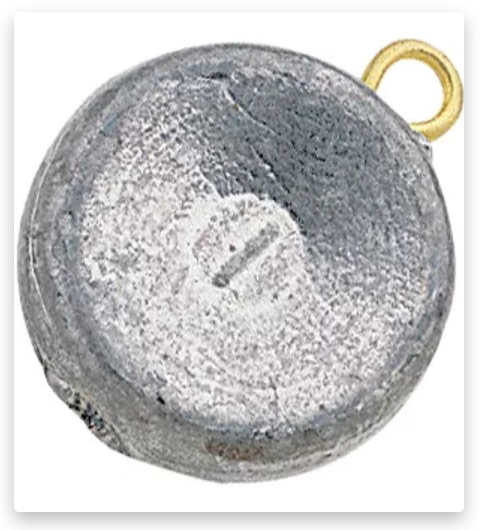

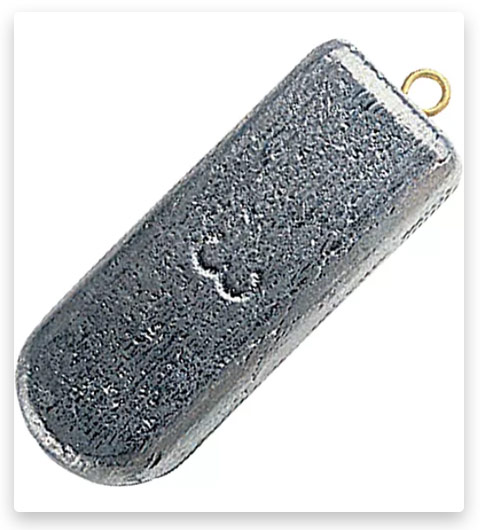
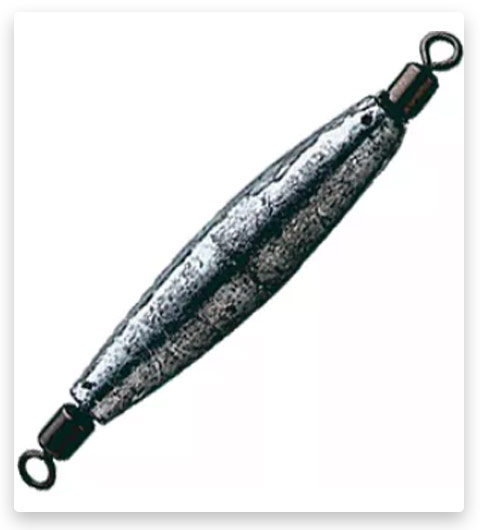
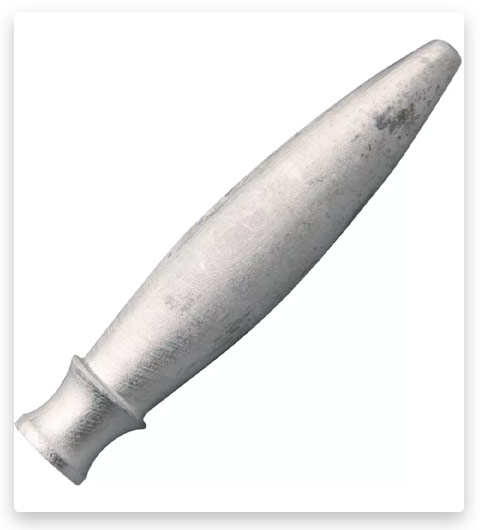
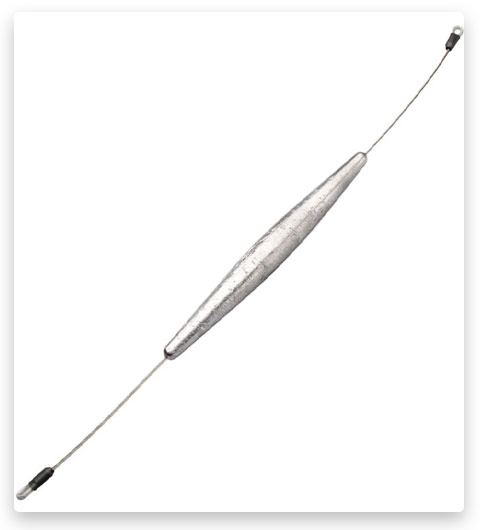
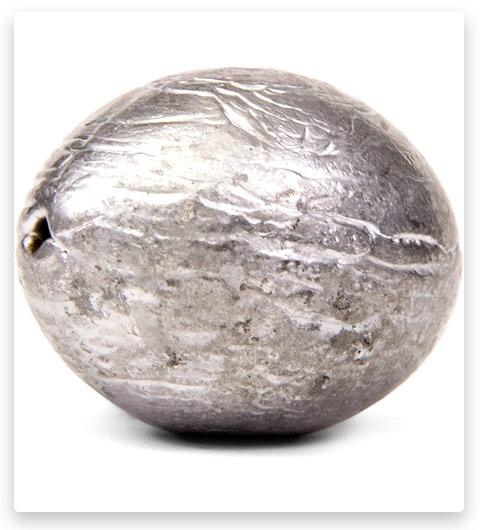
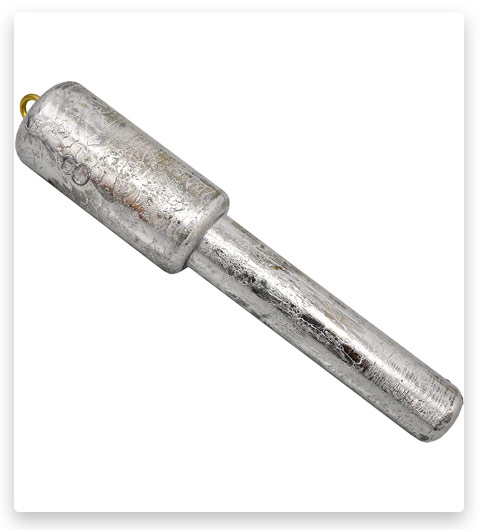
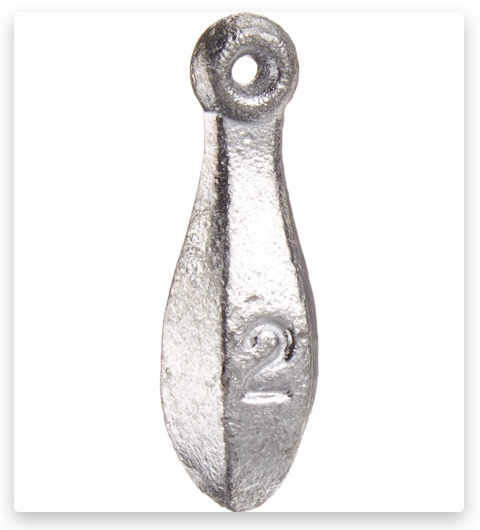
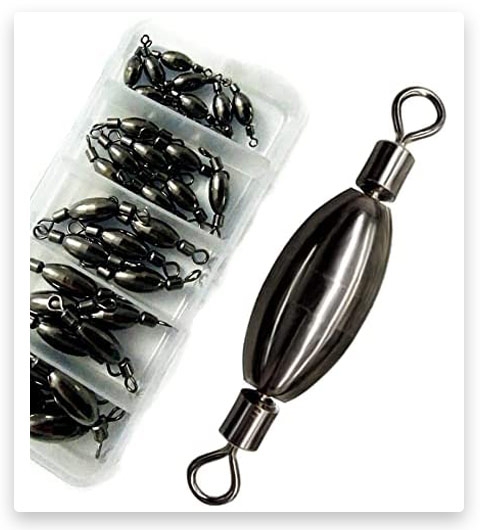

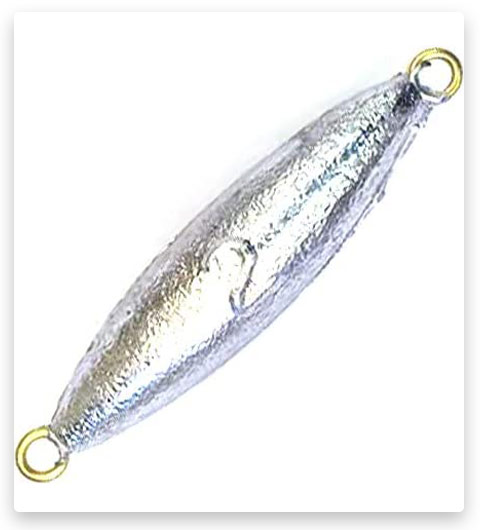
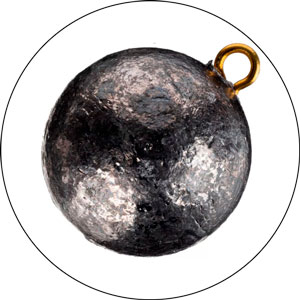
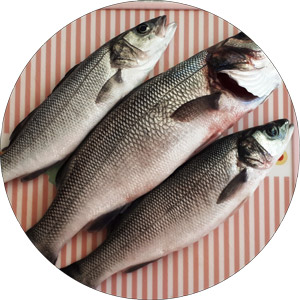


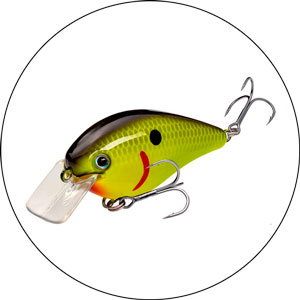
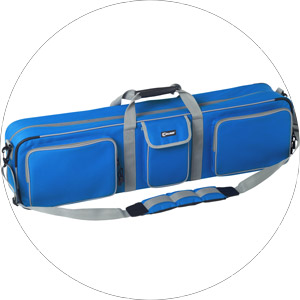
I can definitely relate to your struggles with the conditions affecting your fishing success. When it comes to surf fishing, there are a few things to consider in order to make the most out of your fishing trip.
One of the main factors to keep in mind is the wind and current, also known as the sweep. Sometimes the beach may be too unfishable due to these conditions, but don’t let that discourage you! Your gear can actually help you make more severe conditions fishable.
For starters, it’s important to consider the weight and design of your sinker. Depending on the conditions, you may need a heavier sinker or one better suited for your particular situation. There are surf-shaped sinkers, such as pyramid sinkers, as well as “sputnik” sinkers that can hold a sandy bottom with much less weight.
Another factor to consider is the length of your rod. A longer rod allows the line to stay above the breakers and out of the water for a longer period of time, which means less drag from the sweep.
The type of line you’re using can also make a big difference. Thicker lines are more affected by the sweep, whereas braid really excels in these conditions. Braid also has the advantage of having no stretch, resulting in a tighter line.
The sensitivity of your rod tip can also play a role in your fishing success. If it doesn’t give much, it’s easier to rip your lead out and harder to keep it still.
Lastly, it’s important to consider your rig and bait. Sometimes a rig or bait that’s too big can cause extra drag, making it more difficult to keep your line steady.
It’s also important to keep in mind that surf fishing may not always result in a super tight line. Due to the weight and drag of the line, there may be some apparent “slack”. However, this doesn’t necessarily mean you won’t feel bites or get a good hook set. It really all depends on the severity of the conditions and your specific setup.
In summary, don’t let the conditions discourage you from surf fishing! By considering the weight and design of your sinker, the length of your rod, the type of line you’re using, the sensitivity of your rod tip, and your rig and bait, you can increase your chances of success in even the most challenging conditions.
I’ve been using braid for a while now and I find it really suitable for lure fishing. It does take some getting used to because it’s different from mono, but I think it’s a good choice for newbies as well. All my reels have braid and I find that it casts really well. The only thing to note is that braids can be a bit pricey, especially the high-end ones. So, if you’re just starting out, I recommend getting an entry-level coated braid, like Power Pro Super Slick. The coating really helps with abrasion wear and can also help with casting and drag in the water.
Braid is also much thinner than mono. For example, my 50lb braid is about 20% thinner than 20lb mono. This means that more braids will fit on the spool, which is great for casting. Sometimes people use mono as a “backing” because, with some reels, the first half of what’s spooled on never sees the water. It’s just there to take up space on the spool and save money.
For rigs, I prefer to use mono. It’s stiffer than a braid, so there are fewer tangles and it’s easier to work with. Plus, the little bit of stretch at the end can help get a better hook set. I usually tie my own rigs using an improved Albright to tie onto the main line. I add a few dropper loops and a loop for the sinker (usually just a doubled-up overhand knot). This loop is strategically weaker so that in case of snags, you can break it and still keep your hooks and possibly the fish.
You could also use fluorocarbon for rigs, but it’s more expensive and not really necessary in my opinion. If you’re fishing for toothy fish, you could use wire instead.
As for spooling up with braid, you could use a mono backing and then spool up with the length of the braid you buy. For example, with Power Pro Super Slick, it’s 275 yards. This will save you money and give you the benefits of both braid and mono.
One aspect I forgot to mention is wave action. If the wave action is too rough, it can be impossible to maintain a tight line as each time the wave comes in and retreats, you will have a slack line and bow respectively. This is especially true if you’re using sputnik sinkers or spider weights that grip the sandy bottom. When using a circle hook, eliminates the need to feel the bite and set the hook, especially when using a sputnik sinker.
I think that when it comes to finesse-type presentations, tungsten sinkers are more commonly used due to their higher density. The fact that you can use a smaller tungsten sinker for the same weight as a larger lead sinker means that there is less splash and disturbance on the surface.
However, in the case of larger weights, the splash is usually not a major concern, as the goal is typically to push the bait down to the bottom. This is why lead sinkers are often used instead, and the price difference between tungsten and lead becomes more apparent as the weights get heavier.
In addition, heavier bottom weights are often lost more frequently, making the cost of a large tungsten weight impractical for some fishermen. This may explain why heavier tungsten sinkers are less common and in lower demand.
I don’t use egg sinkers or split shots too often as I prefer setups that allow me to work the bait on the bottom of the lake. The two main weights I use are the free sliding bullet weight and finesse-drop or tear-drop weight for the drop shot technique.
For the free sliding bullet weight, I prefer tungsten for its durability and sensitivity. I often use it in a Texas Rig setup with soft plastic baits such as craws, creature baits, or worms. This rig is especially useful in imitating a crawdad and should be used in early spring, mid-summer, and late fall when the bass are related to the bottom. It’s also great for punching through thick weed cover, as the weight and bait can move independently of each other.
The drop shot technique is perfect for catching suspended bass away from the structure. I like to use it in late summer or early fall when the bass is more finicky. There are specific plastic worms designed for drop-shotting, but I’ve had success with a variety of plastic worms by targeting the proper depth.
While I mainly use these two techniques, I’m happy to share any information I have on other weighted baits such as swim jigs, football jigs, wobble heads, and ned rigs to help fellow fishermen catch more fish.
As an avid angler from Iowa, I can attest to the fact that you can catch bass all year round, even through the ice. Water temperature plays a crucial role in the bass’s activity and metabolism. In colder water, bass tends to move and eat less, while in warmer water, they tend to move and eat more. During the winter months, the bass may feed as little as once a week, while during the peak summer months, they feed at least twice a day.
Although bass can be caught year-round, the best times of the year to catch them are during pre-spawn and spawn, and when the water temperatures are just above 20 degrees. On a day-to-day basis, the best times to fish are early morning (5 am-8 am), evening (6 pm-9 pm), and any time of day if there is thick cloud cover. However, this doesn’t mean that you won’t catch fish outside of these periods. Fish are always there, and always hungry. It’s our job as anglers to make them hungry and give them something they need.
Let’s talk about the “spawn.” This term is used to refer to when bass bulk up and mate. The spawn is related to photoperiod, which is how long the sun is up during the day. Bass tends to spawn when the sun starts staying out longer during the day, which increases water temperatures. The spawn is a fun time for fishing because fish are aggressive, easier to catch, and the biggest they’ll be all year. During this time, they’re just stuffing their faces full of baitfish, crawdads, insects, other bass, lures, and anything they can find to get huge.
In Iowa, I specifically target bass from mid-April through November. I prefer to fish early mornings or evenings, and I don’t like to fish when it’s extremely hot or cold outside. However, any fishing is better than no fishing, so I’m usually out on the water regardless of the weather conditions.
In my experience, using a sinker can definitely improve your fishing game. While it’s not an absolute necessity, sinkers can help you cast your line further and get your bait into the strike zone faster. If you’re using a simple bobber and live bait on a hook rig, I recommend using split-shot sinkers clipped right onto your line. If the sinker is causing your bobber to dip too much, try a lighter sinker or a bigger bobber.
Weights are useful for several reasons. They can help you cast longer distances, get your bait to a desired depth, or anchor your bait in a specific location. In my opinion, the latter two reasons are especially useful in flowing water situations.
For example, in swift water, you’ll need a larger weight to get your bait to a certain spot and keep it there. Otherwise, the current could sweep it away before it even gets to your target area. If you’re drifting in a boat for crappie and you know they’re hanging out at a depth of 7-8 feet, using a weight to keep your bait at that depth is essential. Otherwise, the wind or current could affect its position and make it harder to catch the fish you’re after.